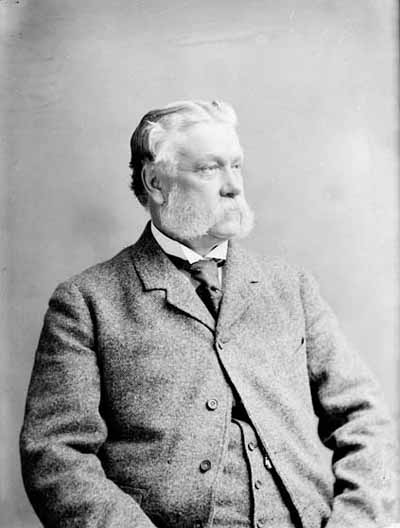Edgar Dewdney National Historic Person (1835–1916)
The Historic Sites and Monuments Board of Canada is reviewing designated national historic persons, events and sites for their connection to the history and legacy of the residential school system. This review responds to the Truth and Reconciliation Commission’s Call to Action 79, which calls on the federal government to commemorate the history and legacy of residential schools.

© Topley Studio / Library and Archives Canada / PA-025795
Edgar Dewdney was designated as a national historic person in 1975.
The Historic Sites and Monuments Board of Canada reviewed this designation in 2023. The following aspects of Dewdney’s contributions to Canadian history were declared of national historic significance.
Reasons for designation
Member of Parliament (1872–79 and 1888–92), Minister of the Interior (1888–92) and Lieutenant-Governor of his adopted province, British Columbia (1892–97), he made his most significant impact in the North-West Territories as Indian Commissioner (1879–88) and Lieutenant-Governor (1881–88).
As Indian Commissioner and Lieutenant-Governor of the North-West Territories, he played a critical role in the administration of Indigenous policy in the Prairie West during a period when the federal government was actively trying to control First Nations in advance of Euro-Canadian settlement, and while First Nations and Métis were suffering from the loss of the bison, despite the federal government having previously accepted responsibility for famine relief with the “famine and pestilence clause” of Treaty 6. Dewdney was responsible for distributing relief, settling First Nations on reserves, and directing the transition to agriculture. An eyewitness to famine conditions, Dewdney coerced First Nations to enter treaty if they had not already done so, and withheld rations from First Nations until they settled on government-selected reserves, despite treaty promises that First Nations could select their own reserve sites. This resulted in malnutrition, disease, and death.
Following the North-West Resistance of 1885, he took full advantage of the events to enable the federal government to exert a policy of coercion and control over First Nations of the plains. Dewdney supported the hanging of Louis Riel, and he requested that the hanging of eight First Nations men in Battleford would be public. Dewdney helped establish the extralegal pass system, a policy that required First Nations people to gain permission from Indian Agents to travel off the reserves.
He helped initiate and shape the residential school system in the Prairie West and beyond, both as Indian Commissioner and as Minister of the Interior (1888–1892). He encouraged Prime Minister John A. Macdonald to establish industrial schools based on the recommendations of the Davin Report. He supported separating children from their parents over long periods of time, and minimizing costs, thereby endangering the welfare and lives of children. His work developing the residential school system had devastating consequences for Indigenous children, families, and communities.
Review of designation
Reviews are undertaken on an ongoing basis to ensure that designations reflect current scholarship, shifts in historical understandings, and a range of voices, perspectives and experiences in Canadian society.
In 2023, this designation was reviewed due to colonial assumptions, outdated terminology, and an absence of a layer of history in the commemorative plaque text. The original text, approved in 1976, highlighted Dewdney’s career as a member of Parliament, Lieutenant-Governor of British Columbia, and Indian Commissioner in the North-West Territories. The text was written from a colonial worldview, describing Dewdney’s policies after the North-West Resistance as “humane and sensible policies”. The original text did not reference his critical role in the administration of Indigenous policy in the Prairie West, and his association with Indian Residential Schools.
New reasons for designation were developed that include Dewdney’s policies and their impacts on Indigenous Peoples. No new plaque will be prepared as the limited text of a plaque does not allow for adequately communicating this complex history.
Source: Historic Sites and Monuments Board of Canada, Minutes, June 2022; December 2022.
The National Program of Historical Commemoration relies on the participation of Canadians in the identification of places, events and persons of national historic significance. Any member of the public can nominate a topic for consideration by the Historic Sites and Monuments Board of Canada.